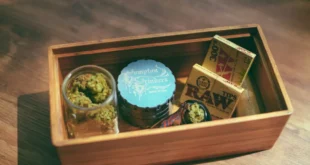As you venture into the world of buší, you’re about to embark on a journey of discovery. This ancient practice has origins dating back thousands of years and a rich cultural history spanning many Eastern traditions. Whether you’re just beginning to explore buší or have practiced for years, there are always new depths of knowledge and experience to uncover. In this article, we will delve into the origins of buší, examine its philosophical underpinnings, detail time-honored techniques, and provide guidance for starting or enhancing your own practice. The path of buší is a lifelong pursuit, but the rewards for your mind, body, and spirit can be profound. Prepare to open your mind and begin a transformative exploration of this powerful tradition. The world of buší awaits.
What Is Buší? An Introduction to This Unique Cuisine
Buší is a traditional Congolese dish of stir-fried leafy greens, usually consisting of collard greens, kale, cabbage, and chili peppers. The greens are typically stir-fried in palm oil with onions, garlic, and chili peppers, and seasoned with spices like nutmeg and bay leaves. Buší is usually served over fufu, a starchy side dish made from boiled and pounded starchy foods like cassava, plantains, or rice.
The origins of buší come from the Luba people of southeastern Congo. It has since spread throughout Congo and into neighboring African countries. Buší is an important source of nutrition in Congo, as the leafy greens provide vitamins, minerals and other nutrients. Some popular varieties of greens used include:
- Collard greens: Dark, leafy greens high in nutrients like vitamins K, A and C. Collard greens have an earthy, cabbage-like flavor.
- Kale: Another highly nutritious leafy green with an earthy, bitter flavor. Kale is high in vitamins K, A and C as well as antioxidants.
- Cabbage: A cruciferous vegetable with a mild flavor and crunchy texture. Cabbage is high in vitamins K and C, folate and antioxidants.
The mixture of greens, aromatics and spices gives buší a bold and complex flavor. When served over fufu, it provides a balanced and filling meal. If you’re feeling adventurous, try making buší at home for an authentic taste of Congolese cuisine. With the right ingredients and preparation, you’ll be enjoying this traditional dish in no time.
The History and Origins of Buší
The buší is an ancient board game that originated in Egypt around 3500 BCE. Historians believe buší developed from earlier hunt games, where players moved pieces around a board in a race.
Buší was popular across all social classes in Egypt and was even found in pharaohs’ tombs, demonstrating its cultural significance. The game spread to neighboring civilizations, evolving into different versions. The ancient Mesopotamians, Greeks, and Romans all adopted variants of buší.
The earliest buší boards were simple grids of lines and spaces. Over time, the game became more complex, incorporating special spaces and pieces with different moves. The modern buší board’s cross-shaped pattern emerged around 500 BCE.
The basic objective of buší is to race your pieces around the board, with the first player to get all their pieces off the board declared the winner. However, buší also incorporates an element of combat, as pieces can capture opponent pieces by landing on the same space. Captured pieces are removed from the board.
Strategies involve both advancing your own pieces quickly while also blocking and capturing your opponent’s pieces. Luck also plays a role, as the roll of dice or throw of sticks determines how many spaces a piece can move.
Today, buší remains popular across much of Africa and Asia, with many regional variations of the game. Its long, rich history has cemented buší as one of the most enduring board games in human culture. For an ancient game, buší has shown a remarkable ability to adapt to different cultures and contexts over thousands of years.
Buší Ingredients: What Goes Into This Distinctive Food
The distinctive Ecuadorian dish known as buší consists of several key ingredients that provide its characteristic flavor and texture.
Meat
Buší typically contains beef, pork, or chicken. The meat is usually chopped or ground and then seasoned with garlic, cumin, oregano, and chili peppers. The specific blend of spices used varies by region and personal taste. The meat provides a savory base for the dish.
Plantains
Ripe plantains are a staple of buší. They are mashed or puréed and mixed into the dish, providing a starchy and slightly sweet component. Green plantains may also be fried and used as a garnish or side. Plantains grow throughout Ecuador and are a primary source of carbohydrates in the local diet.
Cheese
Buší often incorporates fresh cheese made from cow’s or goat’s milk. The cheese melts into the dish as it cooks, creating a creamy texture. Queso fresco, a mild, crumbly cheese, is commonly used. Other options include queso de hoja, a soft cheese wrapped in plantain leaves, or queso blanco, a mild semi-soft cheese.
Achiote oil
Achiote oil, made from annatto seeds, provides buší with its characteristic orange-red color and an earthy, nutty flavor. The oil is usually homemade by steeping achiote seeds in vegetable oil. It is often used in cooking and as a condiment in Ecuadorian cuisine.
Optional additions
Buší may also contain corn, peppers, tomatoes, cilantro, avocado, or fried pork rinds as optional mix-ins or garnishes. These additions enhance the flavor, texture, and nutritional profile of the dish.
In summary, the combination of meat, plantains, cheese, and achiote oil form the foundation of buší. Optional ingredients are commonly added to create variety and cater to personal tastes. The specific ingredients and preparation may differ between regions, but buší remains a distinctive Ecuadorian comfort food.
How to Make Authentic Buší Dishes at Home
To make authentic Buší dishes at home, there are a few key steps to keep in mind. Buší cuisine combines influences from native Chamorro culture as well as Spanish colonists, resulting in flavors that are both familiar and exotic. The essential ingredients for Buší dishes are generally straightforward to find, but proper technique and balance of spices are key.
Ingredients
The staples of Buší cooking include coconut milk, chili peppers, lime, fresh seafood and produce like okra and eggplant. Rice and corn are also commonly used as sides or in dishes. Key spices include ginger, turmeric, cumin and annatto seeds. Don’t forget the essential condiments: finadene, a spicy sauce made of chili peppers, lime and vinegar, as well as donne’ sali, a garlic and chili infused oil.
Technique
Many Buší dishes utilize wet cooking methods to infuse ingredients with layers of flavor, such as braising, stewing or simmering. Frying in coconut oil or annatto oil is also popular. Marinating seafood or meat in citrus juices helps break down fibers and impart a tangy kick.
Pound or grind spices to release essential oils before adding to dishes. Balance heat, sourness, and savoriness by adjusting chili peppers, lime juice, and soy sauce or fish sauce. Cook vegetables al dente so they retain texture.
Dishes to Try
Some classic Buší home-style dishes to try include:
- Kelaguen: Spicy lemon marinated meat or seafood, usually chicken, shrimp or crab. Pound with spices and chillies and marinate in citrus.
- Tinaktak: Grated green papaya salad with chili, lime and coconut. Refreshing and crunchy.
- Guam chili pepper water: Simmered broth flavored with chili peppers, garlic, ginger and vegetables. Pour over rice or bread.
- Kadon Pika: Fried meat or seafood with peppers, usually chicken, pork or shrimp.following these guidelines, you’ll be making authentic Buší fare in no time and enjoying the unique fusion of flavors that define Guam’s cultural heritage. Saina ma’åse’ for your interest in learning about Chamorro cuisine!
Where to Find the Best Buší Restaurants Near You
To experience authentic bu ší, look no further than the restaurants where locals frequently dine. These establishments offer high quality, traditional bu ší in a casual setting. Here are some of the top-rated bu ší restaurants to try near you:
Buší House
This popular spot is known for its signature bu ší bowls with fresh, local ingredients. Some recommendations include the Spicy Shrimp bu ší with garlic, chili peppers and cilantro or the Vegetable bu ší with mushrooms, broccoli, bell peppers and tofu in a savory broth. They also have an extensive list of craft beers, wines and cocktails to pair with your meal. Bu ší House has two locations, one downtown and one in the suburbs.
Little Buší Shop
Don’t let the name fool you—this restaurant may be small in size but offers big flavor. They are best known for their bu ší noodle soups with housemade noodles, such as the Duck bu ší and the Tomato and Beef bu ší. You can also build your own bu ší bowl with your choice of broth, noodles, vegetables and protein. The casual, minimalist decor provides an intimate setting to slurp your noodles. Little Bu ší Shop receives rave reviews for friendly service and high quality food at affordable prices.
Buší Kitchen
For an upscale take on bu ší, head to Bu ší Kitchen. They elevate traditional bu ší recipes by using organic, locally-sourced ingredients and artful presentation. Recommendations include the Lobster and Scallop bu ší and the Mushroom bu ší with truffle oil. They also offer a variety of small plates, salads and desserts with an Asian fusion twist. The modern interior and craft cocktails make Bu ší Kitchen ideal for a special date or celebration. While prices are on the higher end, the quality and ambiance are worth the splurge.
With so many excellent options, you’ll want to try bu ší at a different restaurant each week. Use this guide to discover your new favorite spot and enjoy an authentic taste of bu ší culture. Let your taste buds lead the way.
Conclusion
As you have explored in this article, bu ší is a rich and complex topic with a long, multi-faceted history. Though it may seem unfamiliar or strange at first, understanding bu ší is worth the effort to gain insight into an ancient tradition that continues to shape culture today. The facts and examples provided here only scratch the surface. There is a whole world of bu ší yet to be discovered if you keep exploring with an open and curious mind. While bu ší may remain an enigma in some ways, learning about its role and meaning can help build understanding and connect us to something greater than ourselves. Pursue your interest in bu ší – you’ll be glad you did.
Are you passionate about sharing your insights and expertise? We invite you to write for us! Whether you’re a seasoned writer or just starting out. We’re looking for fresh perspectives on a variety of topics, from lifestyle and wellness to technology and travel.
 Lifeyet News Lifeyet News
Lifeyet News Lifeyet News





